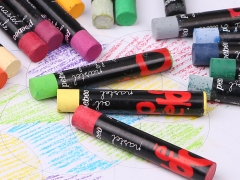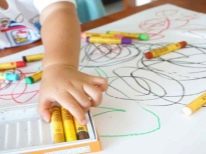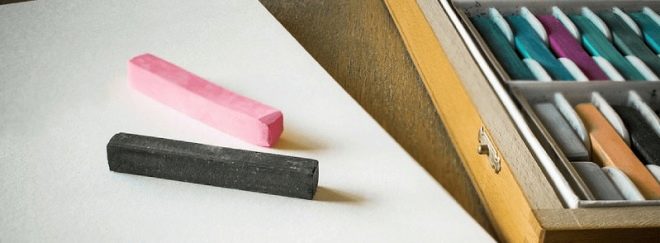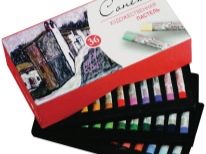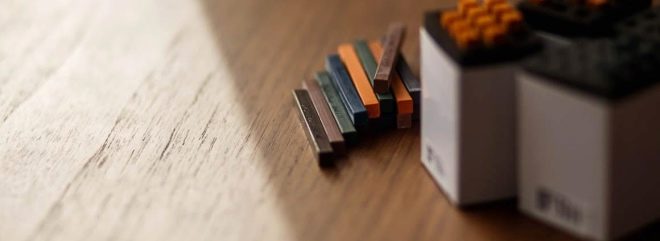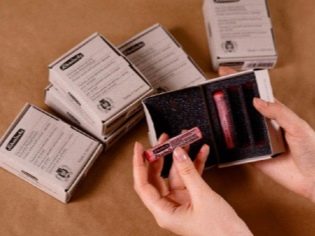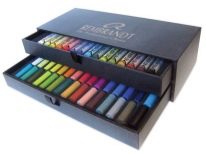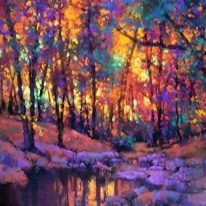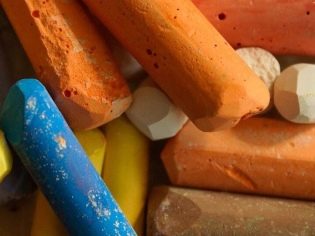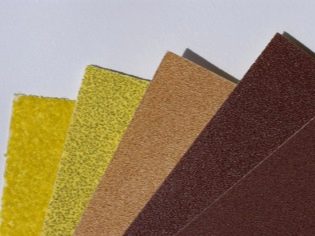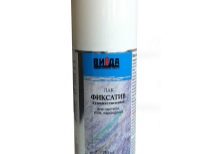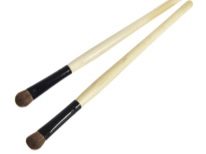Dry pastel: features of use
There is a version that pastel owes its name to the Italian word pastello. The term designated drawing technique, which was used in Italy in the 16th century. It consisted in using an Italian pencil simultaneously with a sanguine. Now pastels are popular in the artistic environment, attracting craftsmen with delicate texture, airiness, and a wide range of colors.
What it is?
Pastels are soft pencils of various colors intended for painting. The advantage of this paint is that it does not need to be diluted, it does not have a strong odor, it is completely non-toxic. In painting, several varieties of pastels are used:
- dry;
- wax;
- oil;
- watercolor;
- silicon.
Dry pastel is pure pigment mixed with a solid binder. Due to the chalk in the composition of the image takes a matte velvety texture. Available in hard and soft form. The brightness of the picture depends on the degree of softness of the paint: solid pastel - a dim pattern, soft - brighter. The color spectrum is represented by a large number of shades. Dry pastel is considered the most common to use.
It is made in the form of crayons or pastel pencils. Easier than other types, mixed with different colors. Dry pastels just shaded on paper. This is their difference with the oil, as, indeed, in some other points. For example, if oil pastels do not stain everything around, then the dry one falls on all nearby objects. It is necessary to work with it very carefully.
Dry pastels need to be fixed, as over time, the paint will begin to crumble. In art shops special clamps are sold in cans. For these purposes, often serves the usual hairspray. It is advisable to keep the drawing under glass or in a folder under paper. Dry pastel is applied only on paper, which distinguishes it from other varieties. When working with hard chalk, rough rough paper should be used to make the paint easier to lay down. It can be applied in layers.
The colors of the dry-looking pastels blend easily. It can serve for the formation of new shades. Also, if the crumbs are crushed, the resulting powder can be added to various soft, thick or liquid materials to give them color.
Keep Karski need in a dry place at a positive temperature of 18-20 degrees. Avoid direct radiation.
Composition
Dry pastels consist of pigment, fillers and a binder, which can be sugar, Chasov-Yarskaya clay, tragant, gum arabic or other water-based glue. Different whites are added to the mass to give different shades to the colors. If chalk, talc, and gypsum are used to dilute the color, then it is possible to do without an adhesive substance, since, mixing with the coloring powder, they will knit it. The degree of hardness of the finished pastel depends on the volume of the binder - the bigger it is, the shallower it is.
Kinds
Dry art pastel is made in two forms: hard and soft.
Solid
Available in the form of rectangular crayons and pastel pencils. It is convenient to use pencils, they do not stain, and the drawing is neat. But the color spectrum is not as wide as that of the crayons. Hard pastels can sharpen because they don't crumble so easily. This is usually done with sandpaper.
This type is convenient for fine, clear lines, contours, small parts, shtrishkov. But the color is not as bright as that of soft crayons.Can be used to create sketches, sketches, the basis of the picture. And in this regard, it is better to give preference to solid pastels, rather than graphite pencil.
Solid pastel is easier to use. It is suitable for children and emerging artists.
Soft
Available in the form of crayons round shape. It is more difficult to use them than solid ones due to breakage and flowability. In this regard, they are wrapped in paper. If soft pastel falls, it will crumble to pieces, therefore, in circulation, you need to act carefully and carefully.
Used as a professional material by experienced artists with developed exploitation skills. The widest color spectrum. Paint due to softness is well fixed on the paper, and the shades are bright and saturated. It is bleached easily, the texture of the pattern is beautiful and interesting. Soft pastel well fills a vast empty space on the canvas. This type of dry pastels is more velvety and airy.
To prevent random mixing of colors on paper and shattering, you can use a special clip or hair spray. It is better to use a substance specifically designed for this, so as not to spoil the color of the image and not form spots. You can work simultaneously with two types of dry pastels.
Pastel crayons are available both individually and as sets for drawing in 12, 15, 18, 24, 36, 48, 60 and even 120 colors.
Top Marks
Consider the most popular brands.
Sonnet
This domestic company offers sets of colors in 8, 12, 36 and 48 colors. Crayons are rounded in shape in a box in two tiers, which saves space when carrying. Fragile; easy to apply, have semi-solid structure, not sprayed. The price is acceptable.
Mungyo
Soft square crayons. There are both familiar and specific colors. In the first case, the sets can be presented in 12, 24 and 48 colors, in the second - 12 monochrome shades of dark tones. There is also a set in 72 colors. The paint contains high quality pigments that contribute to light resistance. The colors mix well, the pattern is soft and velvety.
Faber castell
Sets of rectangular crayons are available in 24, 36 and 60 colors. Firm uses high quality pigments, each piece of chalk indicates the level of resistance to light. The paint fits perfectly on any paper: smooth and with rough edges. Drawing can be easily shaded with fingers, brush or other devices. Sharpened ends can be used to create fine lines, and a flat, wide piece of crayon to paint large areas of the design. Finished work is better to fix.
Rembrandt
Professional material suitable for both experienced artists and beginner painters. Cylindrical crayons are produced. The composition contains Chinese kaolin and natural dyes. A large amount of pigment makes the colors saturated. Crayons non-friable, light-resistant, well applied to paper of different texture. In total, the manufacturer’s arsenal contains 218 different shades. There are sets in 15, 30, 45, 60, 90, 120, 150 colors. The price is high.
Kon-i-noor
The Czech company produces rounded pastel crayons. The brand is popular among painters. Binders and dyes are purchased by a firm from reputable, reputable manufacturers. Available in sets of 12, 24, 36, 48 colors. Paints juicy, saturated. The price is acceptable. Crayons are soft, paper does not scratch, the paint is applied easily. Colors can be mixed.
Sennelier
High quality pastel. Smooth, pleasant to the touch. Appreciated by professionals. The choice of colors is very wide - 525 tones. The price is high.
Conte
Famous French manufacturer. Smears of this pastel are soft, velvety. Paint is well applied to the material. Suitable for writing large pictures. The price is average. Kits are easy to carry. As inferior to some firms.
Lyra
Rectangular pastel crayons of the German company are suitable both for professional painting, and for amateur. The material does not crumble, the colors are bright, they easily mix with each other, which is good for users, because the sets are available in only 12 and 24 colors. The price is high, but corresponds to the quality.
Olki
Petersburg company produces a dry pastel of a cylindrical shape. Total manufacturer offers up to 150 shades. Good for feathering, easy to use when staining with your fingers. Fairly attractive price, but quality is average., as the material itself, and packaging. Crayons break easily.
Schmincke
Dry soft pastel "extra" German manufacturer. It is made in rounded shapes. The amount of binder is minimal, the pigments are non-toxic. Can be used in different techniques. Application to oil and acrylic is allowed. It is necessary to use clamps. Color palette - up to 400 different shades. The price is high.
Reviews
Positively, customers respond, of course, about those firms that have proven to be good quality. Pastel Rembrandt was highly appreciated. Among the minuses there is only high cost and inaccessibility. Paint maker Faber Castell is also attractive for buyers. Among the drawbacks is the size of the crayons — too small.
Positive feedback also received paints Mungyo, Sonnet, Schmincke, Lyra, Sennelier. The negative characteristics of users of pastels of other brands speak mainly about the fragility of crayons, the inconvenience of storing, carrying and applying on paper, as well as the ability of pastels to stain everything around.
How to choose?
The dilemma of choice usually comes up against the question of quality or budget. Therefore, pastels are chosen based on the financial possibilities and availability of the product. Beginners inexperienced amateur artists or students of art faculties can at first opt for less expensive materials. Professionals are accustomed to high-quality paints, which usually fly into a pretty penny.
Solid dry pastels, as a rule, are purchased for drawing fine lines and fine details. The basis of the drawing is best done with pastel pencil. Sanding paper is usually used to grind crayons.
Soft pastel is chosen to create a rich background, painting over the details of the pattern. If you plan to mix colors to get a new one, soft crayons will do. High-quality soft pastel will fit well on the paper without breaking and not crumbling much. Such crayons are well suited for staining foamiran.
Regardless of the type of dry pastel, it is better to use rough paper to make the paint easier to apply and not fall off. But not very rough, so that when applying paint with your fingers, do not feel discomfort.
When buying a set you need to carefully familiarize yourself with the properties of crayons and colors. Sets of color palettes are available for specific purposes, this is indicated on the packaging: portrait, landscape, assorted.
Also try to choose the brand in a good package, which soon will not worn out much. High quality storage box will keep crayons intact when carrying or traveling.
Brands pastels from which you can choose a suitable paint are listed above. In addition to the crayons themselves, it is recommended to purchase also feathering tools, sandpaper, fixative, and mustable for work. You can perform drawings on canvas, postage paper, pastel paper, cardboard.
As for the pastels, as a material for drawing, the views of professionals and amateurs diverge. Some people adore working with pastel crayons, while others dislike their composition and discomfort when applied to paper.
How many people - so many opinions. Therefore, the choice: how to create masterpieces is determined only by your preferences.
In the next video, artist Victoria Polina is testing dry pastels from around the world.
